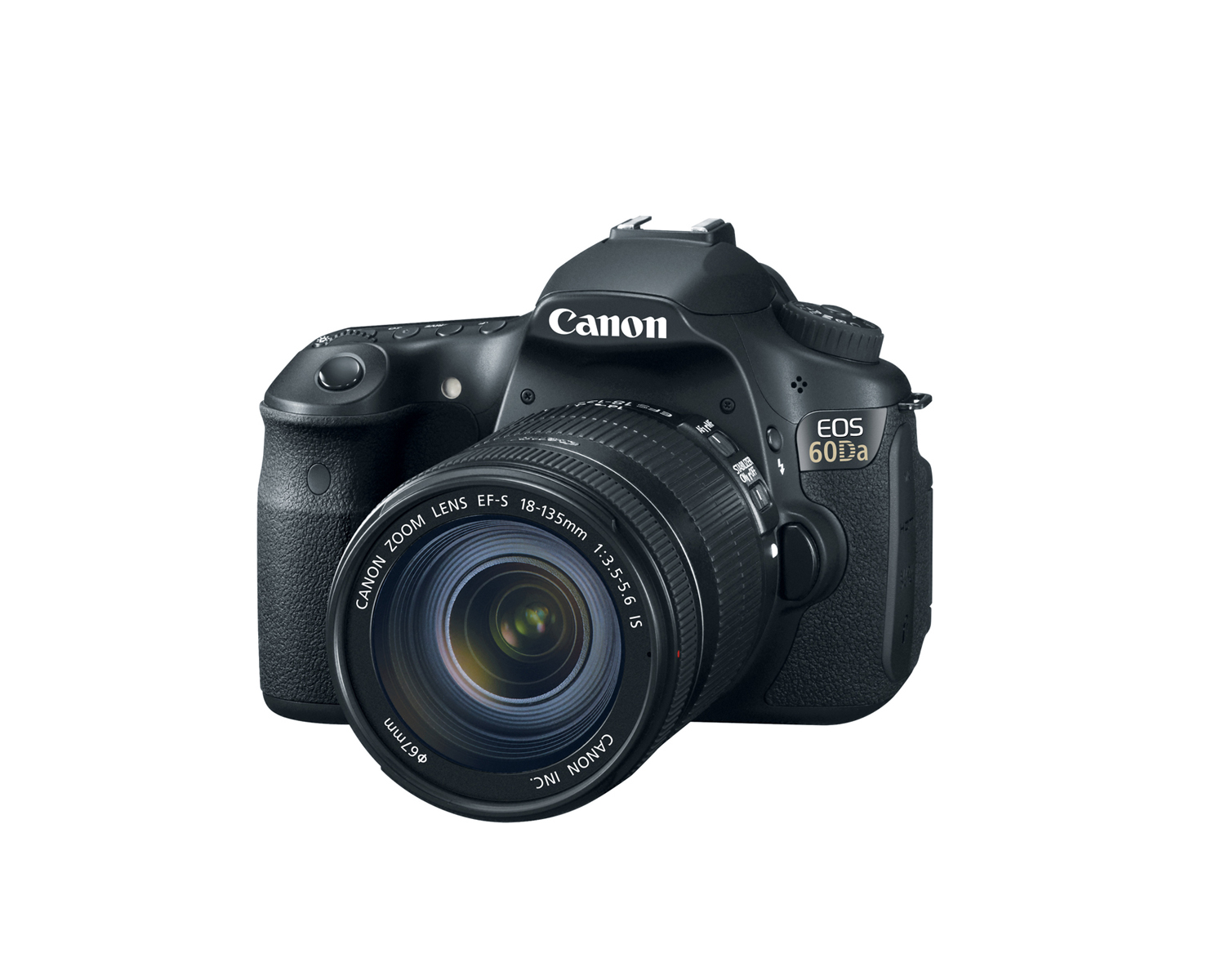LAKE SUCCESS, N.Y., April 3, 2012 – Canon U.S.A., Inc., a leader in digital imaging solutions, today introduced the EOS 60Da Digital SLR Camera, a long-awaited successor to the EOS 20Da that is optimized for astrophotography. This DSLR caters to astronomers and hobbyists who enjoy capturing the beauty of the night sky by offering a modified infrared filter and a low-noise sensor with heightened hydrogen-alpha sensitivity. These modifications allow the camera to capture magnificent photographs of "red hydrogen emission" nebulae and other cosmic phenomena. "The EOS 60Da is a testament to the constant desire to meet the needs of every customer, including those in specialized fields," said Yuichi Ishizuka, executive vice president and general manager, Imaging Technologies & Communications Group, Canon U.S.A., "This new camera enables an accurate depiction of a part of our solar system which is hard to achieve with conventional cameras but should be enjoyed and celebrated."
The Canon EOS 60Da camera packs a powerful 18-megapixel CMOS sensor (APS-C) that produces sharp and high-contrast images of astronomical objects, a major enhancement over the EOS 20Da model's 8.2-megapixel sensor. The improved infrared-blocking filter is a modification suited specifically toward astronomy enthusiasts to achieve a hydrogen-alpha light sensitivity that is approximately three times higher than that of a normal Canon DSLR camera. This produces a 20-percent higher transmittance of Hydrogen Alpha line, or H α wavelength, allowing astronomers to capture crisp, clear images of reddish, diffuse nebulae.
